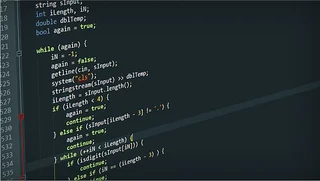
It doesn’t matter what industry you’re in – manufacturing, technical or industrial or something else – at some point, we all need to select software for our company. If you’re looking to purchase or implement software, it’s typically because you don’t yet have a system or you’ve outgrown your current software or manual processes. Whatever your case may be, there are many choices in the market today.How do you know where to begin? You should start at the end. What do you mean by that, you ask? You need to understand what output you want from the software application. If you know what you want as an end result, you can start working your way backwards to be sure you’re capturing the information to achieve your end results. Remember, there’s not a software application out there that will give you everything you want. But take heart – you should expect to get to around 80% of your goal.

Step 1. Requirements Gathering
If you already have processes in place or maybe even an outdated software application, review everything and see what works and what doesn’t. If you’re starting from scratch, be sure you have a good understanding of how work flows through the business. In either case, you’re going to want to note the end results you want, including types of reports, graphs, actionable data, and so on. Create a checklist of must haves, nice to haves and “don’t needs,” and be realistic with this list. The must haves should pertain to your end results. The nice to haves will make your end results easier or maybe even better. The “don’t needs” could be options that you eventually grow into. Be sure you involve all of your stakeholders when creating your end results and checklist. Different roles in the company may want different results from the software application.
Step 2. Research and Review
Now that you’ve created end results and a checklist, you need to find a software application. There are many ways to do this research. You can go to the internet and read reviews on the software applications. Try to determine how many companies are using the software. How long has the software been around? How much does it cost? In today’s software market, cost can be difficult to determine, especially if you’re considering a SaaS (Software as a Service) model. (SaaS companies tend to provide basic functionality at one price point and charge you for add-on modules with more advanced features. Be sure you include all necessary modules in your cost estimations.) If you’re in the manufacturing, technical or industrial industries, you may want to see what other companies are using for software. Start by narrowing down your search results to three software applications. Then, determine which one gives you the most must haves, nice to haves and “don’t needs” while staying in your budget.
Step 3. Implementation
This is the most crucial part to a successful software purchase. You’ve done all the work to select the software and commit to a budget, and now you need your employees to embrace and use the software. You may want to bring in consultants to help with this portion of your project. They can help build an implementation plan and should have expertise in the product to help guide the setup and roll out. An alternative to consultants is ask someone in your company to become the expert. Remember to have your key engaged stakeholders share that this helps the company and in return helps employees. You want the daily users to feel that what they’re doing makes a difference – and that this software that they’re learning actually means something. You can do a pilot program to get some technical issues figured out before rolling the software out to all users. This should also get you more advocates, because they’re seeing the benefits of the software. Establish a good training program and have a person or group of people who are the go-to when there are questions.
If you follow these three steps you should have a successful purchase and implementation of your software application.

